Cool Boys with Cool Toys: The Cult of the Operator and the "Crisis" of Masculinity
Bravo Six needs some dope pictures to share in the break room
“The Cult of the Operator” is a relatively recent term that can largely be described as the glorification of Special Operations Forces (SOF) that elevates the individuals who are part of these units (operators) as elite warriors (distinct from soldiers) whose extensive training and inherent psychological mindset make them the perfect scalpel for use on the modern battlefield. This has also evolved concurrent to a new martial identity forged in the fires of the peace dividend that embraces a warrior ethos and an obsession with lethality.1 It has mostly floated around in national security (shitposter) circles but become increasingly common and relevant due to the steady militarization of American police and federal law enforcement (who are increasingly being deployed to American cities) as well as the embrace of this idea by large swaths of the contemporary GOP, including many leading figures within the current administration.
The term I like to use is “cool boys2 with cool toys” because the operator, with millions of dollars and thousands of hours of training poured into their career, is afforded a leeway in equipment quality and choice that most other soldiers do not have. The operator is distinguished from the “regular” infantry by the finest force multiplying doohickeys Uncle Sam’s taxpayers can buy and many come to believe that those doohickeys are the force, not the multiplier.
This is in turn perpetuated by the depiction of special forces in popular culture and the eager embrace of that depiction by the subjects themselves. There is an enormous industry of veteran podcasts that serve as a news-entertainment hybrid3 for many American men with many hosting their own shows or appearing as guests on the shows of other content creators. Here they present themselves as an authoritative source on war and conflict as well as how to go about doing it despite many of them never actually having a hand in strategy.4
There are countless books, movies, TV shows, comics, and video games depicting special forces operators as badasses who are the only men available who can solve a serious problem with their intense training and warrior ethos being what makes them a cut above the “regular” soldier. This coexists alongside a massive industry of “tactical” products, experiences, and parasocial relationships marketed by these men. Navy SEALs are the most egregious example of this phenomenon with SEAL guides to fitness, diet, and even parenting. SEALs endorsed workout equipment and even charged inflated prices for executive team-building camps.5
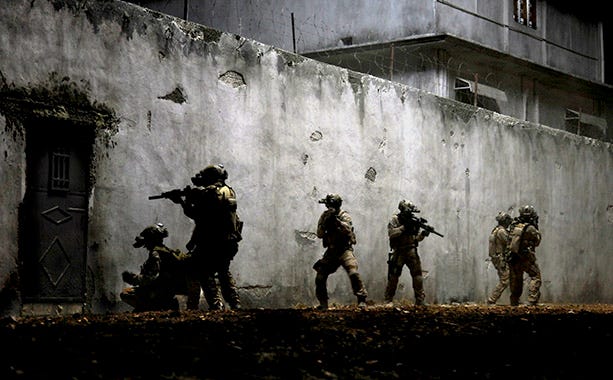
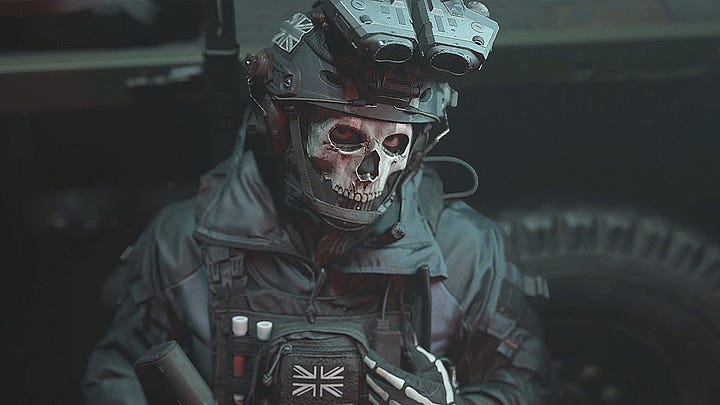
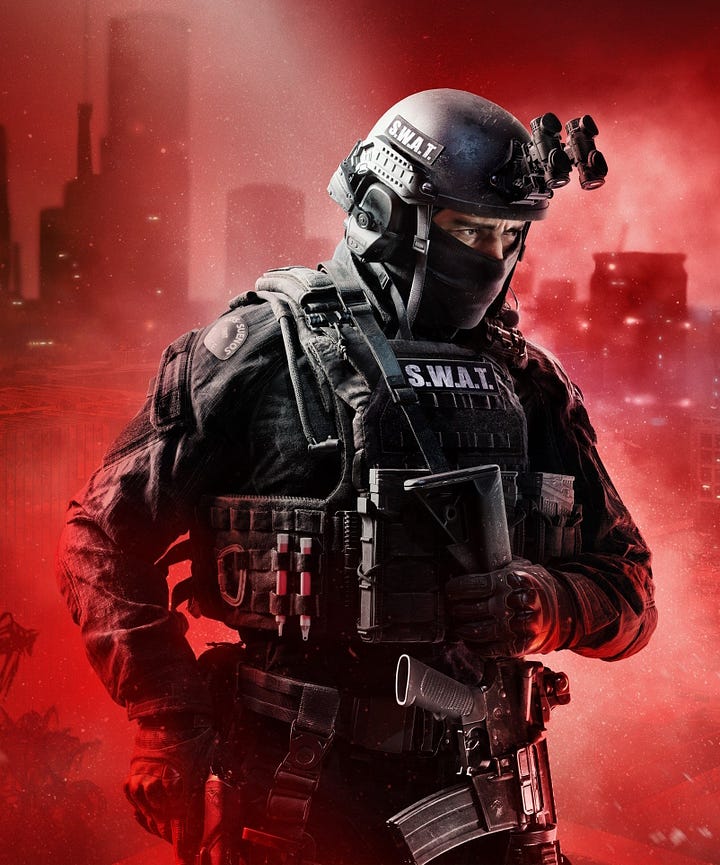
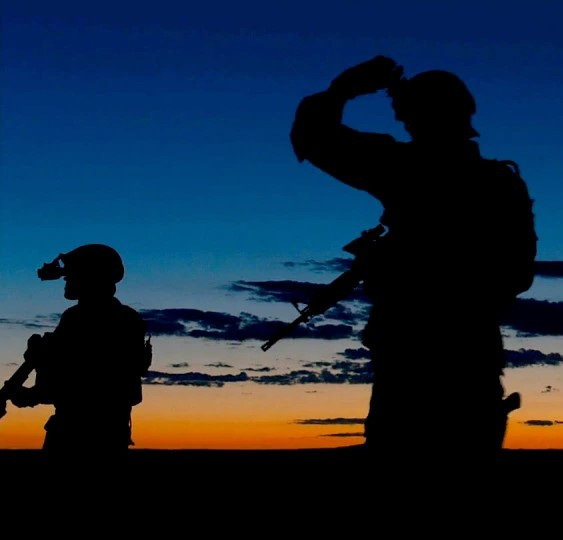
The emergence of this phenomenon can be traced back to the Great Male Renunciation.
For those unfamiliar, the Great Male Renunciation is the historical phenomenon that took place at the end of the 18th century where men effectively renounced their claim to being beautiful. They did away with flamboyant colors and elaborate dress6 and replaced it with solid, darker colors, and what would eventually become the suit that every male world leader or societal elite is expected to wear.
The Great Male Renunciation deprived men of the means to peacock for other men.
The Cult of the Operator and all of the aesthetics of violence it entails are a vehicle for men to “prove” how they are more masculine than their peers through the purchase of equipment they affiliate with elite military formations. It is a cargo cult of masculinity.
Obviously the phenomenon of men wanting to impress other men with material possessions extends to numerous other consumer goods7 but the primary salesmen of this form of masculinity being men whose professional reputation is built around a mythos of peak masculinity cannot be overlooked.
These men present themselves as the preeminent example of manhood and sell a performance of masculinity and an aura of violence to other, more insecure men. A quick visit to “guntube8” or military tactical gear communities will present you with a myriad of customized weapons or pieces of load bearing equipment meant to resemble those seen in photos of real soldiers in real warzones. Manufacturers are more than happy to oblige these desires and make advertisements with veteran special forces operators describing their equipment setups and handy links for you to buy it from them.9
Going to war is scary and dangerous so clearly the next best thing is to listen to the guy who did. Buy yourself some $300 pants in multicam “stop resisting”10 and the gun doohickeys he has a sponsorship for so you can play operator on a flat range and get some pictures to show off around the water cooler because you want to make Jerry from sales look like a nerd.
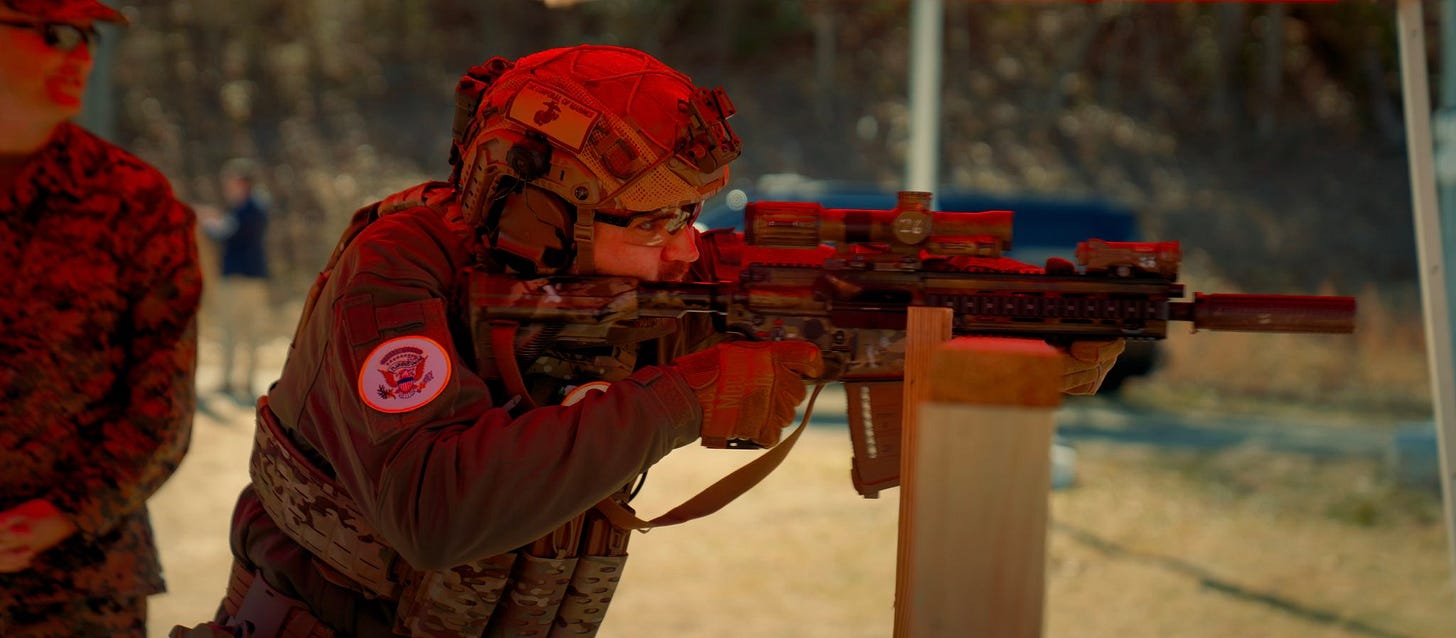
At first glance this appears to be another abstract gender theory thing but it does materially manifest itself into domestic policy.
The militarization of American law enforcement is a long observed phenomenon but it is worth noting that this is aesthetic militarization rather than institutional militarization.
Domestic law enforcement officers are civilians, many of them have less training than soldiers and far less than the special forces operators they idolize. Their institutions do not enforce rigid discipline and oversight nor do they cultivate a culture of duty over self. Yet they are showered in military equipment provided by the Department of Defense and paid for by local taxpayers.11 Police departments even use this as an incentive with an Oregon State Police SWAT team recruitment email presenting images of men in plate carriers aiming rifles under night vision while asking “are you jonesing to fire less lethal rounds and gas canisters?”
As of very recently, American law enforcement have also seen themselves tapped to carry out the Trump administration’s illegal deportation orders. They are deployed to American cities while outfitted in the full panoply of war as if they were occupying Baghdad to round up line cooks. The appearance of these law enforcement officers as elite special forces is intentional, both because they are pretending to be soldiers, and because they believe the people who come to oppose them will see them as the unstoppable warriors depicted in movies and video games.
They want to achieve violence by having crowds perceive violence.
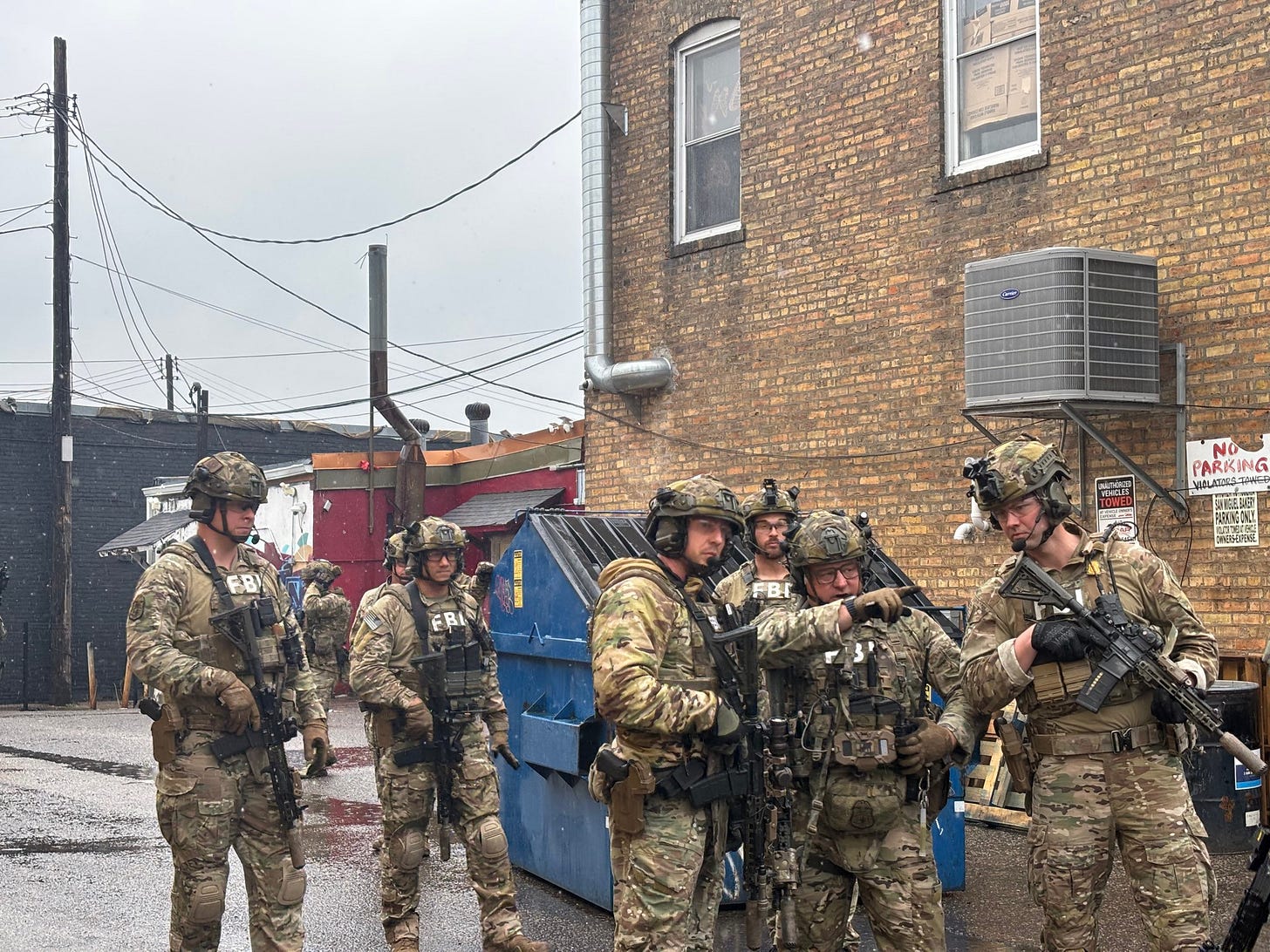
Maybe making Jerry from sales look like a nerd isn’t enough.
If that’s the case you can take it one step further and become a cop. They won’t send you overseas, you’ll never get shelled, and you can stay at home and play with all these cool toys that Jerry can’t own because he’s a civilian. You can be a manly man who carries a gun and fights crime.
You can convince yourself that if the time comes, you’ll be a hero. You have none of the training but you have all of these talismans and surely they will grant you bravery and skill in battle as though you were a heroic warrior of yore.
For more, see The Rise of American Bushido
The gendered aspect of this is incredibly important. Yes, this is an essay about gender. If you have a problem with that, that is a skill issue.
Podcasts in this form are roughly analogous to talk radio or hourly news segments for people who don’t have landlines. This is an important concept to understand even outside of the scope of this essay.
The relationship between strategy and tactics should not be overlooked but none of these guys have written policy briefs or thought about how their preferred methods of extreme violence in uniform (or possibly out of it) would impact strategy.
David Philipps. “Alpha.” p. 267
Contrary to popular belief, the premodern era was not gray and brown, it was quite colorful.
The ones that should immediately come to mind are cars, watches, and videogame microtransactions.
This is the colloquial term for the youtube channels who make content about firearms and the firearms industry
This is one example of many, you could spend weeks browsing these spaces for manufacturers using an appeal to authority to sell products or offering “clone correct” reproductions of equipment.

![Sam [REDACTED]'s avatar](https://substackcdn.com/image/fetch/$s_!1Fx0!,w_36,h_36,c_fill,f_auto,q_auto:good,fl_progressive:steep/https%3A%2F%2Fsubstack-post-media.s3.amazonaws.com%2Fpublic%2Fimages%2F9f12d66a-aa73-4a82-90c0-44a6dffc0dc5_2064x1548.jpeg)
A few things:
1) You can literally see the switch to the Cool Boys with Cool Toys in real time with Call of Duty 4. Yes, most of the game is you playing as Tier One epic badass SAS, but a solid chunk of the first half of the game is balanced with you playing as a regular ass Marine (yes I know you're technically Force Recon but you don't really do too much recon lol). What does the game do? Oh you just get nuked as regular military so I guess we need to go all in on spec ops. The next two MW games did thankfully strike a balance between the setpiece combined arms shit and the "Bravo-Six going dark" but I think the writing was on the wall. Ever since MW3, every single CoD - the best selling game from my youth to those of today - has centered on badass Tier One JSOC guys going on whoopass missions. No coincidence that this cargo cult exists when the main media has said as much for this long.
2) It is incredible how widespread this is in the weirdest ways. Back when I worked at a local govt agency last year (white collar, well paid desk jockey) I had a guy on my team a few years older than me (frightening as I was 25) who fully bought into this stuff. I'm fairly certain he's in a militia group (even more certain I know exactly which one which hooooooboy) and this dude keeps an armor plate in his backpack. Like, the ones from Warzone. We worked in an office, who the hell is after you. He now has a son and I am terrified of what he will become as this dude spoke at length of how he was going to raise him.
Great piece, this cultural phenomena really needs to be understood to move forward and push back.
I'd argue it's a way way older phenomenon, Soldier of Fortune.
Again, America faced every one of the problems at least since the 1990s, you need to dig into the history, Algeria, Angola, Rhodesia, this is where it all comes from.